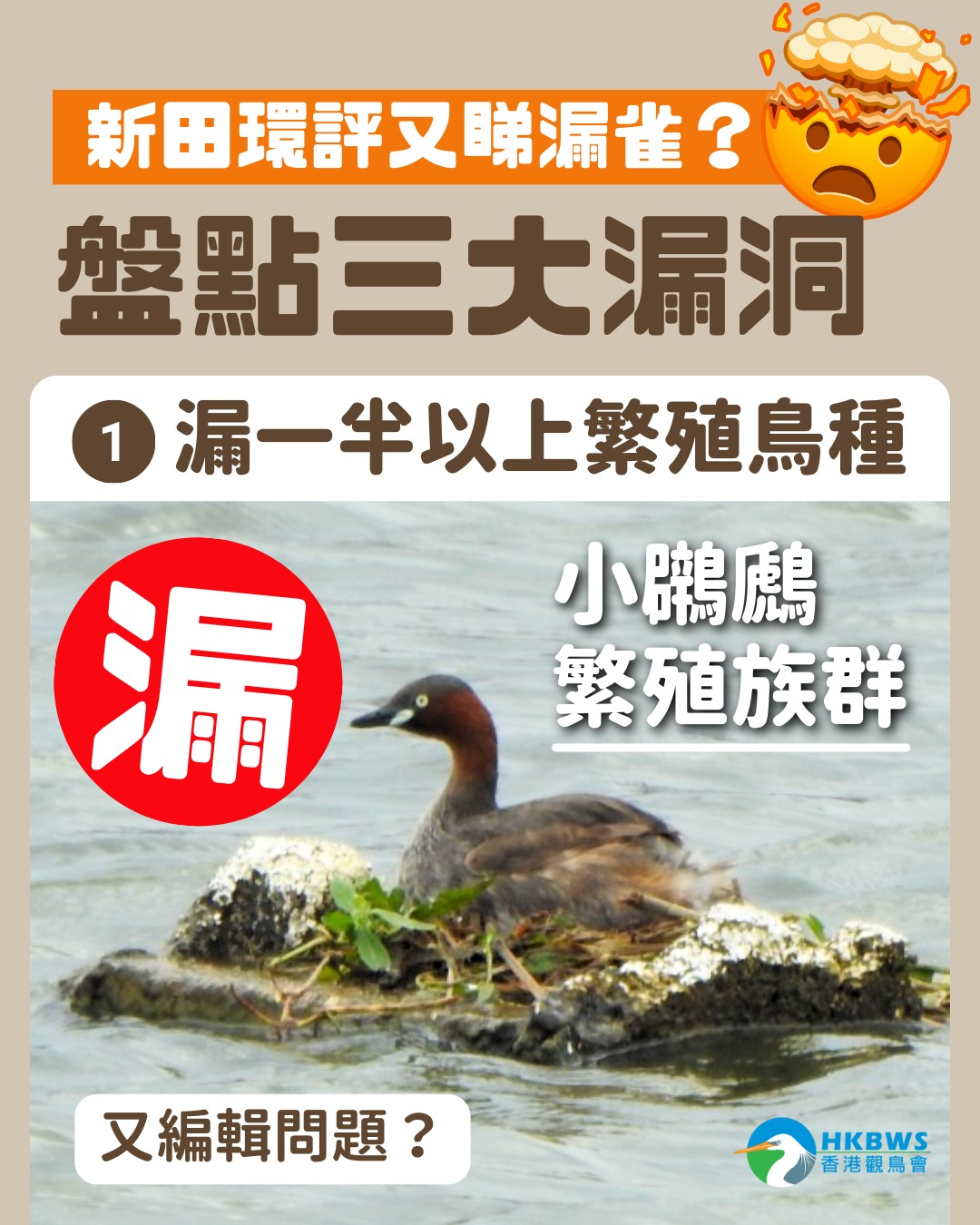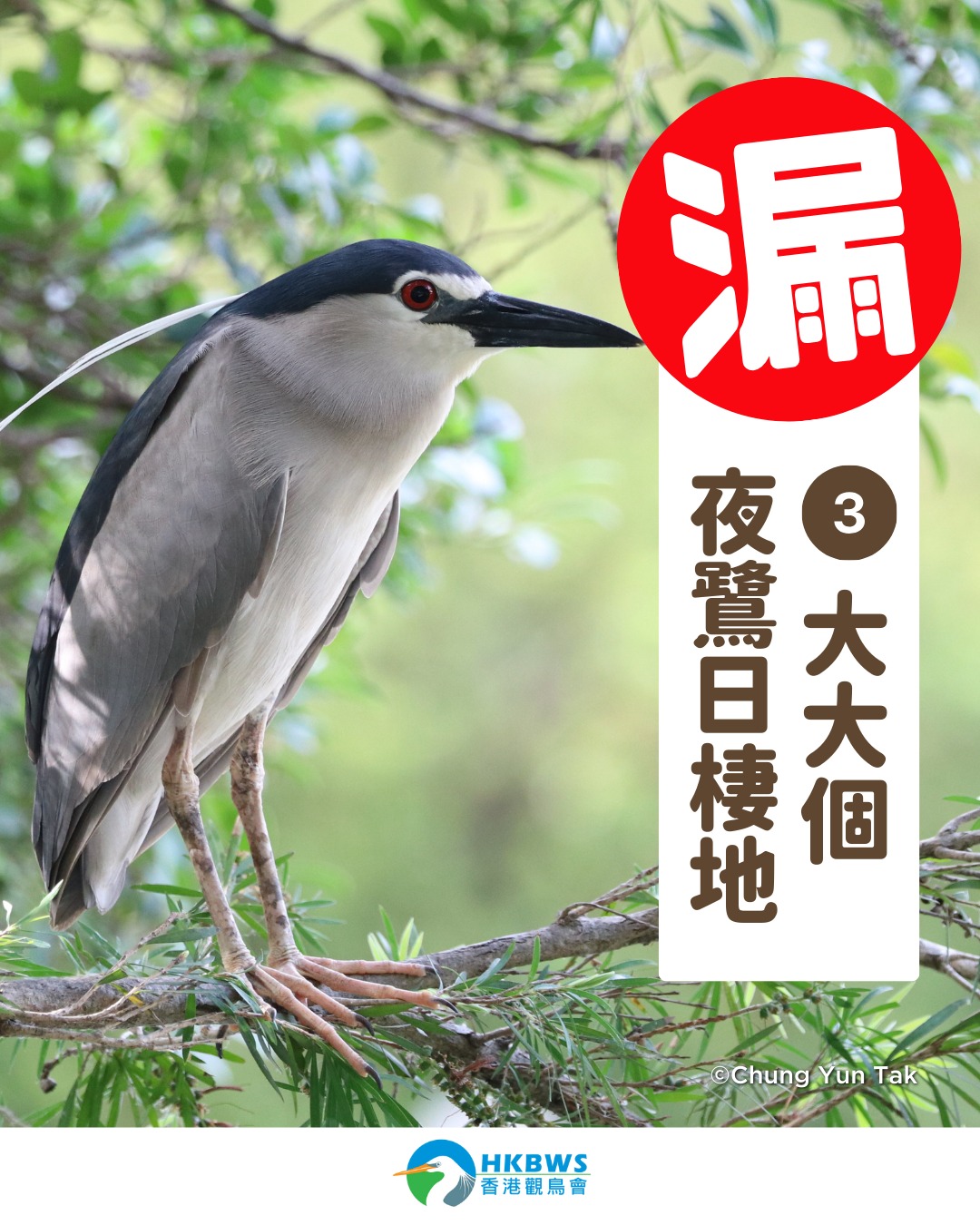【More missing birds in the San Tin EIA Report?】
Following the Environmental Protection Department's clarification of the bird misidentification as an "editing issue", it seems that there are more oversights in the San Tin Technopole's EIA report ?.
⚠️ Overlook more than half of the breeding bird species in fishpond wetlands
The fishpond wetlands are important breeding grounds for many waterbirds. For example, breeding records of Little Ringed Plover, Little Grebe and White-breasted Waterhen have been recorded in the proposed filling areas. However, the EIA report only records the breeding behaviour of two bird species (i.e. Little Ringed Plover and White-shouldered Starling) in the fishpond areas. In other words, the report has overlooked at least half of the known breeding bird species in the fishpond areas.
In addition, the report has also failed to find out the potential breeding grounds for various landbirds and bitterns in the inactive fishponds and reedbeds. As breeding is a crucial part of the bird life cycle, any disturbance to them would directly threaten the survival of their entire populations.
⚠️ Missing common landbird species in fishpond areas
Landbird species such as #Reed Warblers, #Zitting Cisticola, and # Siberian Rubythroat are commonly found in fishponds and open country habitats. Surprisingly, the report does not have the records of these species, which is highly unusual ?. Identifying such landbird species requires certain skills, including familiarity with their calls. If not familiar with their characteristics and behavior, there is a possibility of overlooking them, leading to underestimation of the ecological value and function of San Tin wetlands.
⚠️ Overlook the day roosting site of Night Herons
The trees around the flood storage pond next to the San Tin fishponds is a day roosting site for Black-crowned Night Herons. Last year, we observed over 54 Night Herons flying from this roost to the fishponds in search of food before sunset. However, the report fails to mention this roosting site. This overlooked roosting site appears to have a larger number and scale of heron usage than the other roosts that identified by the applicant. We are concerned the EIA has significantly underestimated the adverse impact of the development on the heron population.
⚠️ Disregarding the EIA process and hasty expansion of development?
As early as May last year, when the government suddenly announced a doubling in scale for the San Tin development, we, together with environmental groups, pointed out potential issues with using the outdated EIA study brief that issued in 2021. The potential problems include the failure to consider public opinions on the ecological significance of the filling areas, inadequate methodology, and increased risk of overlooking factors in the EIA report, leading to an ineffective assessment and a severe underestimation of the significant ecological impact of the San Tin Technopole. Unfortunately, the government insisted on using the outdated study brief and refused to reapply for an EIA regarding the new proposal .
HKBWS is deeply concerned that the aforementioned missing sensitive receivers are just the tip of the iceberg. We urge the Environmental Protection Department and the Advisory Council on the Environment to exercise strict review, ensuring the accuracy of the EIA and not to easily accept such a flawed EIA report, in order to avoid causing irreversible damage to the environment.








